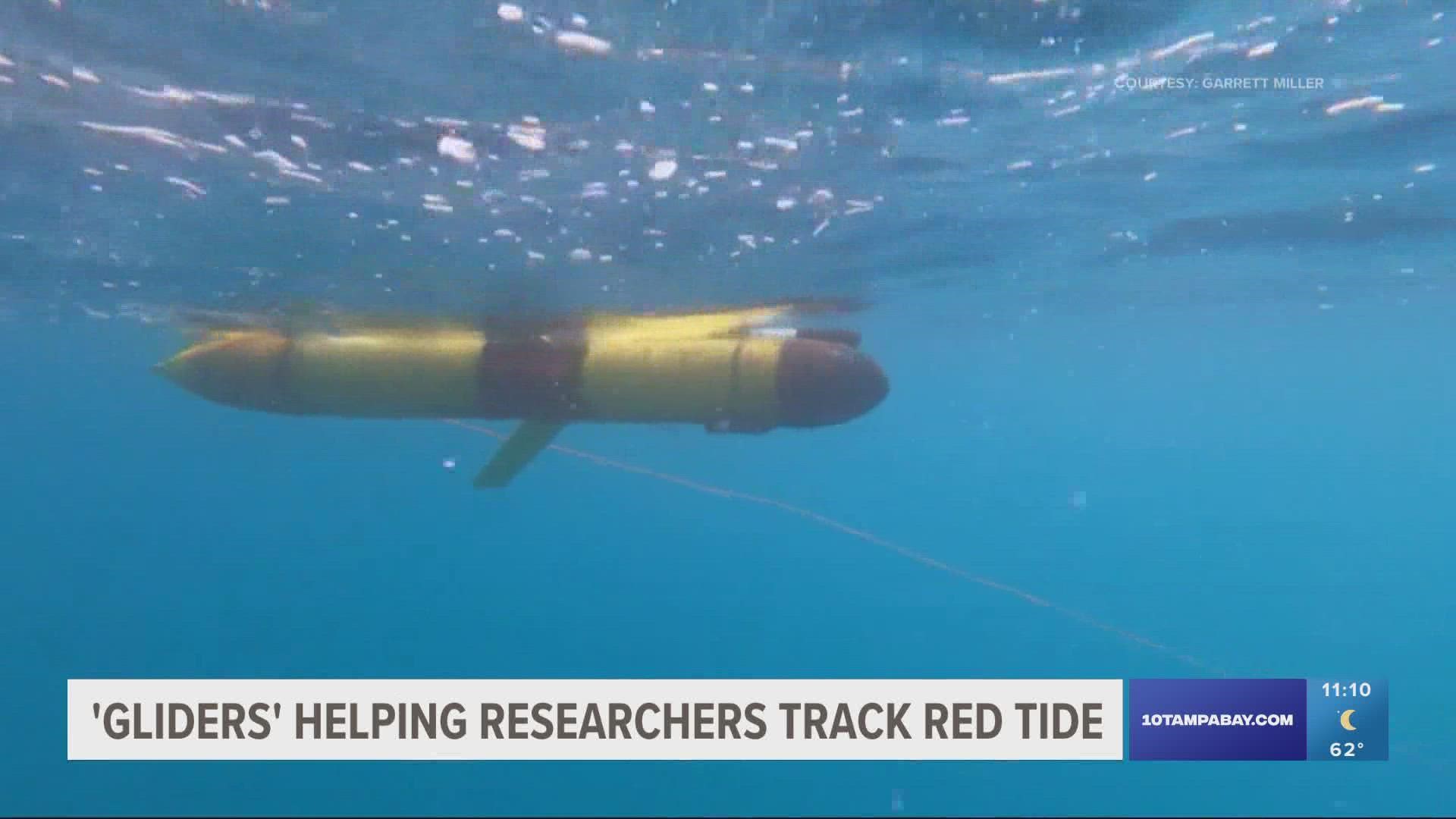ST. PETERSBURG, Fla. — Researchers are tracking the progress of concerning red tide across Florida's coast.
The Florida Fish and Wildlife Conservation Commission (FWC) is concerned about red tide in four counties: Manatee, Sarasota, Charlotte and Lee. On Friday evening, researchers released a map of where red tide was detected as of Thursday. Some red and yellow dots could be seen along Sarasota's coast, near Venice. Red indicates higher levels of red tide.
Meanwhile, at USF in St.Petersburg, researchers at the College of Marine Science are honing technology to better detect these blooms and where they're going next. Specifically, they're using research 'gliders' equipped with sensors to better understand conditions offshore.
"They're robots that go out and spend weeks, two months in the water at a time collecting information from the surface to the bottom," USF Research Faculty Chad Lembke explains.
The 6-foot torpedo-like gliders gather information like water temperature, salt content, light or "fluorescence values."
"You can guess that red tide is there or not based on the fluorescence values that we get back from the sensors," Lembke said.
The gliders and their technology play a crucial role in how researchers can now track red tide blooms.
"We can send a boat out, but a boat can only go out for a day or week," Lembke said. "These can stay out for weeks to months at a time and are much cheaper than a boat can go out there for."
According to a coastal tracking system, on Friday, USF glider 'Gansett' was nearly 120 miles off Florida's coast.
Lembke says the gliders have been in use for the last four to five years, gradually becoming more self-sufficient and better at collecting data.
"These are workhorses. These things work and they work well," Lembke said. "That's one of the best things about them is that as complex as they are, we put them in the water and we have a pretty good expectation that it's going to work and get us the data that we want."
Most recently, the gliders have been put to work examining the impact of Hurricane Ian.
"It definitely had an impact on the circulation of the eastern gulf of Mexico, which may or may not be conducive to helping the red tide," Lembke said. "It also dumped a lot of water on land and in the local estuary. And we're looking at how all that's interacting with the normal conditions of how the shelf usually moves around."
Red tide toxins can cause breathing problems and irritation, especially for people with asthma. Red tide can also kill marine life. The Department of Health recommends that you and your pets avoid swimming in areas with red tide.

